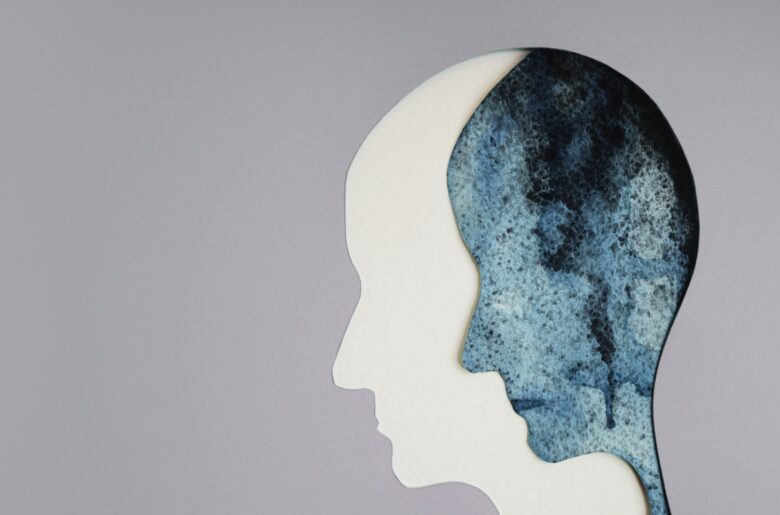In a world that remains hyper-fixated on appearance and idealized body image, the prevalence of eating disorders continues to be a concern in the medical and mental health community — in particular, the prevalence of eating disorders among women. While men and those who identify as male can certainly develop disordered eating, women are more than twice as likely to have an eating disorder throughout their lifetime than men, according to statistics from the National Eating Disorders Association.
Societal pressure and body dysmorphia can affect everyone, but stereotypically and statistically, women have been more associated with eating disorders, especially anorexia nervosa and bulimia. Why this is the case involves a multifaceted conversation about how we market to women, how women are treated within society, and the pressures placed on women that men may never experience.

Source: canva.com
Contents
How it begins
“My personal struggle began as a confluence of genetic factors, emotional stress, and external pressure from my track coach advocating for a lighter physique. This led to a pattern of restricting food intake and excessive exercise,” Heather Baker, LCSW-S, CEDS-S, and founder of Prosperity Eating Disorders and Wellness Center, told Medium. “Over time, these behaviors morphed into obsessive guilt around eating, constant weight monitoring, and a pervasive sense of being unworthy and unloveable.”
As Baker notes, factors like stress, social pressure, and guilt all play a part in the formation of eating disorders. However, through research and her work in the space, she has also come to discover that many eating disorders may also have a genetic component.
The way an eating disorder begins often involves a variety of factors that sufferers may find they have in common. Some of these may include an overbearing parent who expects perfection, the experience of bullying in childhood over a few extra pounds, or exposure to media that stresses a certain physique.
“Eating disorders are a complex issue that is rooted in emotional, psychiatric, genetic, and physical components,” Baker explains. “Eating disorders are not phases. They are formed due to the inability to manage emotions, situations, and stress levels typically due to trauma, major life transitions, or other major stressors.”

Source: canva.com
Societal pressure
Eating disorders are nothing new, but the explosion of social media and the societal pressures of perfection that come with it have added another level of complication to their diagnoses. Social media has played a profound role in shaping the perception of the “perfect life” — including the perfect body.
According to Statista, women are more apt to use social media and, therefore, more likely to be exposed to the litany of profiles and pages about diets, staying thin, pursuing the “perfect body,” and the beauty standard. Social media platforms, like Instagram, are flooded with images of the “ideal body.” Thinspiration accounts abound despite many platforms trying to control their content. Body shaming and cyberbullying run rampant, and influencer culture has created an unattainable ideal that can leave many women feeling like, no matter what they do, they will never be enough as they are.
Baker feels that societal pressure also goes beyond social media. “The mass production of diet ads, products, and the ‘thin’ ideal or the ‘obesity epidemic’ have made it normal to be constantly evaluating one’s diet, body, and whether they are meeting the world’s standards,” she shared with Medium.

Source: canva.com
The brain component
In a recent study authored by Dr. Catherine Preston of York University’s psychology department and published in the medical journal Cerebral Cortex, a team looked at the differences between men and women and the brain’s response to body appearance. The results of the study were significant; through virtual reality (VR), 16 men and 16 women were shown a first-person view of a thin or obese body made to seem as if it were their own. The study’s team measured the brain activity of the participants and found brain activity that indicated “fear” or “anger” was far more prevalent among the women who saw an obese body — even though it was clearly rendered in VR and none of the participants had an eating disorder.
Ultimately, the study illustrated how a significant cognitive difference between men and women and their differences in body perception may exist. This cognitive factor may point to one reason for a higher number of women suffering from eating disorders.

Source: canva.com
Community involvement & changing the narrative
“Sometimes I get tired of all the subtle ways women are told they’re not good enough,” Baker wrote for her company’s blog in a December 2022 post entitled Can Your Doctor’s Office Trigger Bad Body Image? “I’ve gotten used to it happening in magazines, commercials, and in all the ads that tell us how to look younger, prettier, sexier, and skinnier, so I expect to see those messages in certain settings, which I can mostly avoid.”
However, there are still countless messages in society, media, and even in schools that tell women how to feel about their bodies.
“The shift of the government pressing the ‘obesity epidemic’ has gone too far over the other side. Calories should not be listed on elementary school lunch lines or all menus at restaurants. Not being able to bring in treats for birthdays or other celebrations also hurts, but most of all, BMI being an indicator of health is perhaps the most hurtful and completely wrong way to measure health,” Baker shared with Medium.
Baker feels we all must shift to focusing on the emotional health of women, especially young girls. Social isolation, bullying, and messages of the “ideal image” are wreaking havoc on the self-esteem of girls from a young age — and that toxicity is carrying into adulthood, resulting in disordered eating patterns.
“In my dream world, school would teach us how to cope with our emotions, major life events, communication, problem-solving, build inner strength when bullying or negative self-esteem arrives, and, most importantly, social skills,” she told Medium.
It is undeniable that eating disorders affect all genders, races, and ages, yet the prevailing proof that women are more susceptible to eating disorders deserves a more nuanced examination. Societal expectations, online influence, diet culture, and even the makeup of the brain combine to form a perfect storm of predisposition in many women.
As we move forward in the fight to end eating disorders, a focus on body positivity and open dialogues about mental health are integral to changing the narrative and challenging harmful stereotypes.
